After the end of both Euro 2020 and Copa America 2021, the clubs started to strengthen their squads and reveal their new signings. Some of them were working behind the scenes for expanding their teams, while others were closely following both tournaments, targeting some of the best performers there.
While two of Arsenal’s players Bukayo Saka and Granit Xhaka were among the best players in the Euros, the fact that the London side only had four players on international duty wasn’t very satisfying. The promising news is that they were looking to bring new signings in the summer, starting with introducing the left-back Nuno Tavares from Benfica and being linked with multiple other players.
Even though the Gunners have one of the most promising full-backs in the Premier League in the face of Kieran Tierney, the club clearly didn’t have a decent replacement in his position in cases of injury, formation change or even if he stops performing up to standards. That made Arteta’s life harder, with Sead Kolašinac out on loan last season, and the only option on the left being Saka, who was used as a wing-back on multiple occasions.
Arsenal were looking for a backup option, as apart from the abovementioned, they only had the U-23 Joel López. Securing Nuno Tavares’ signature might not be a straightforward solution to their problem though. The 21-year-old lacks much of a senior experience yet which and combined with moving into a completely new environment means that he will need quite a lot of time to adjust and establish himself as part of the game-day squad.
The positives are that he has a lot of quality for his age and could develop into a decent replacement for Tierney in the future. This scout report in the form of a tactical analysis examines his strengths and weaknesses and how he can fit Arteta’s tactics.
How could Tavares help in possession?
Last season, the Londoners started to heavily rely on Tierney in their ball progression efforts as well as in their attacking movement. The left flank was their most frequently used area as they focused on using Tierney’s physicality to advance the ball and his crossing ability for creating chances in the final third.
He spent decent time out injured though which caused Arsenal a lot of struggles, not only because of their dependency on him but also because they didn’t have a replacement. The lack of squad depth affected Arteta’s decision-making and he was struggling to choose between formations as none of them was working well in the long term.
Although the left-back/left wing-back wasn’t the team’s most problematic area, bringing a new addition was a necessary step of the Spaniard’s efforts to transform them.
Nuno Tavares started his football venture as a left-winger but was permanently moved to a deeper role as he grew up due to his pace and ability to take on opposing players. And these are the two qualities that everyone focused on in his development.
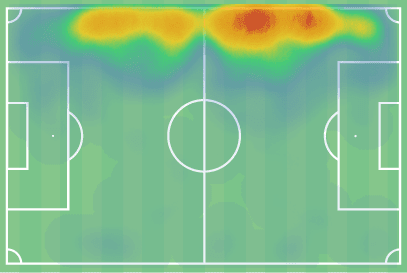
The ex-Benfica player’s main strength is his pace and his ability to deliver the ball to the advanced areas. He has mostly been used on the left and his movement has mainly been focused on supporting the attacking actions through dribbling and crossing.
As Benfica played both with a four-man defence (4-4-2) and a back three (3-4-3), the 21-year-old has experience both as an LB and a WB. The wing-back position though gives him more freedom to use his strengths as he is not experienced enough defensively. That’s why the possibility of playing alongside Tierney in Arteta’s 3-4-3 scheme might be the best option if the manager insists on giving Tavares more playing time and boosting his confidence.
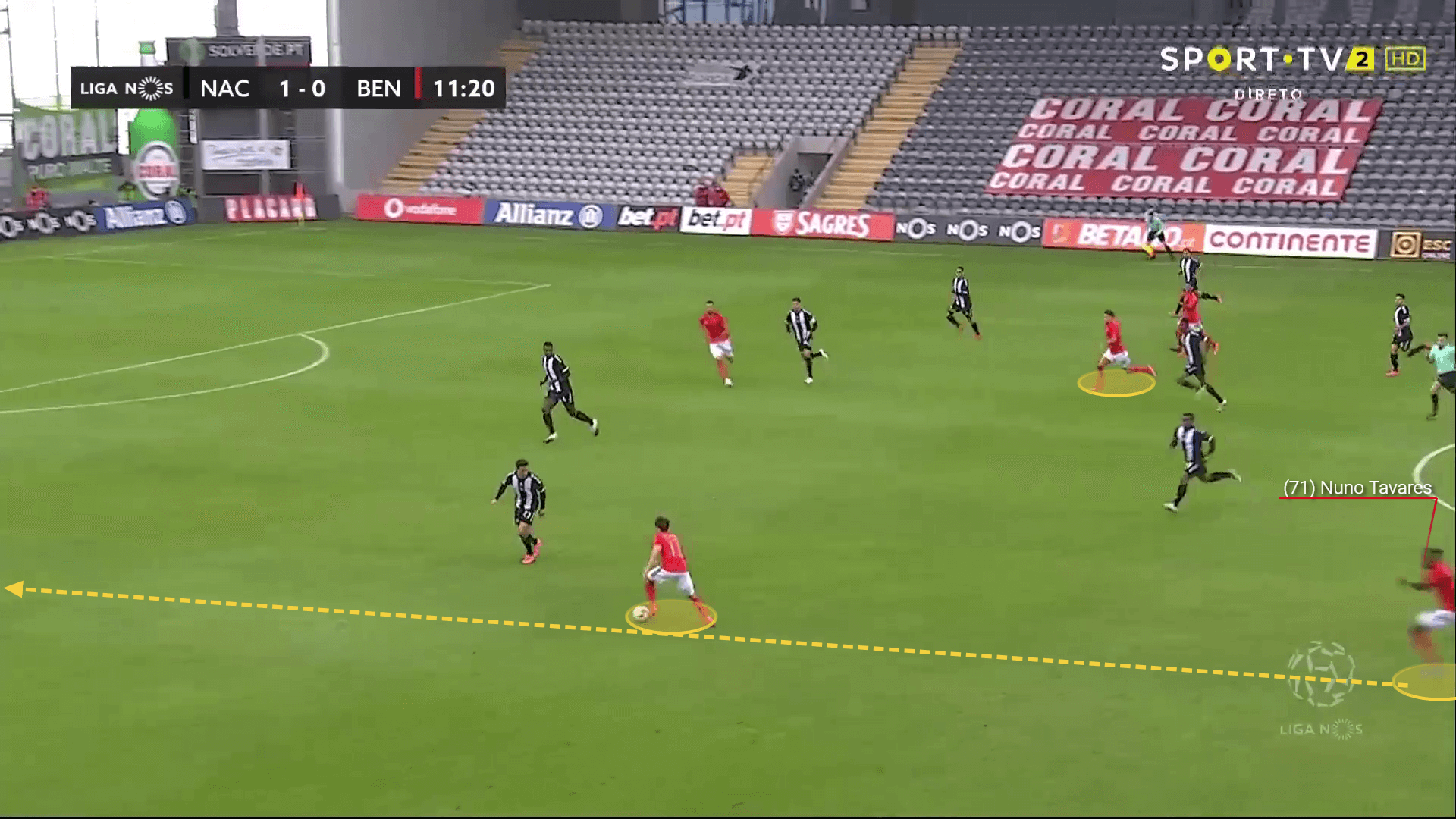
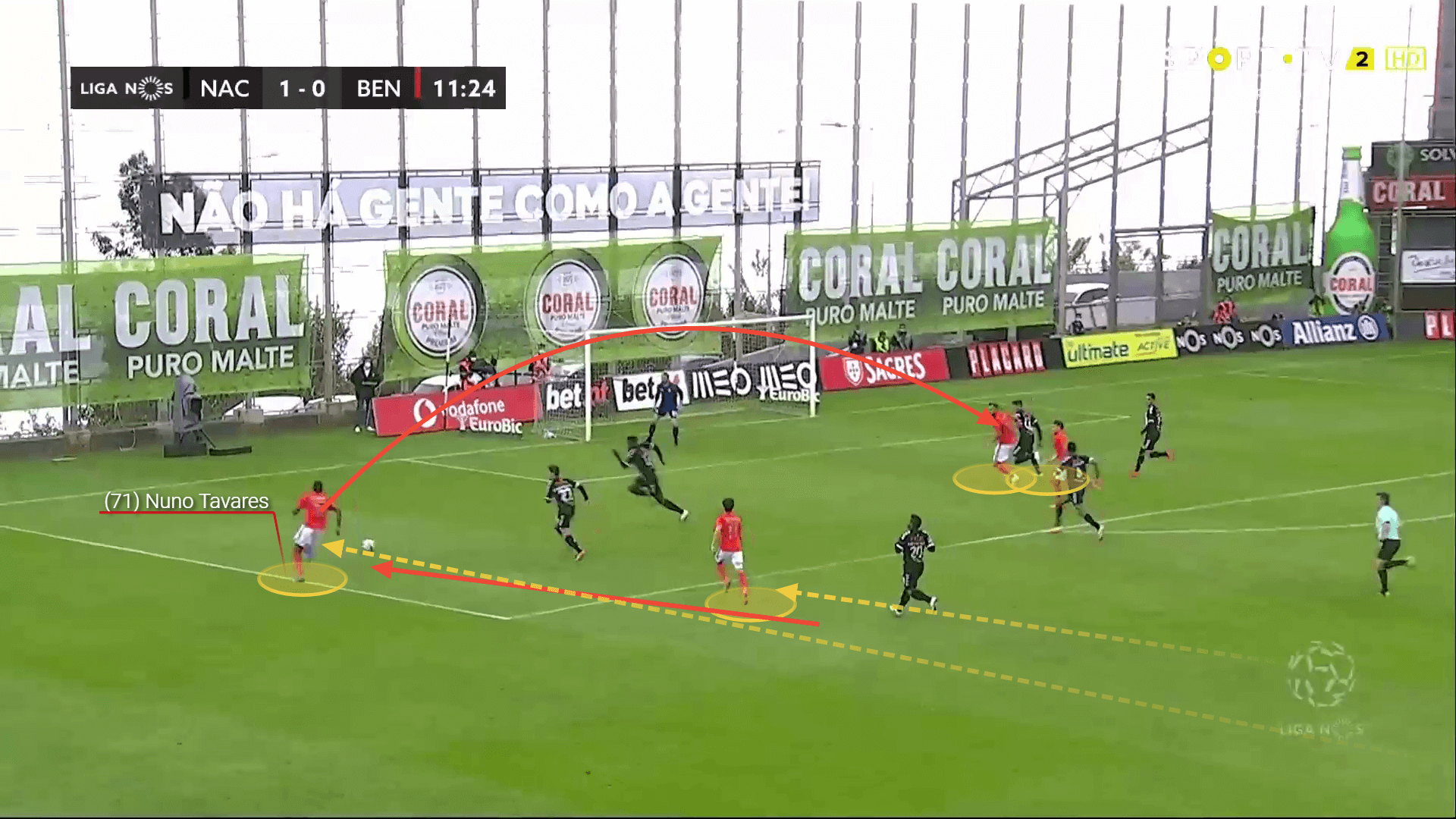
That way, he will have support from Tierney as an LCB both defensively and in possession and be able to provide an additional threat in the final third. This will also allow the team to do overlapping and underlapping runs and create more combinations on the left, respectively to help their ball progression immensely.
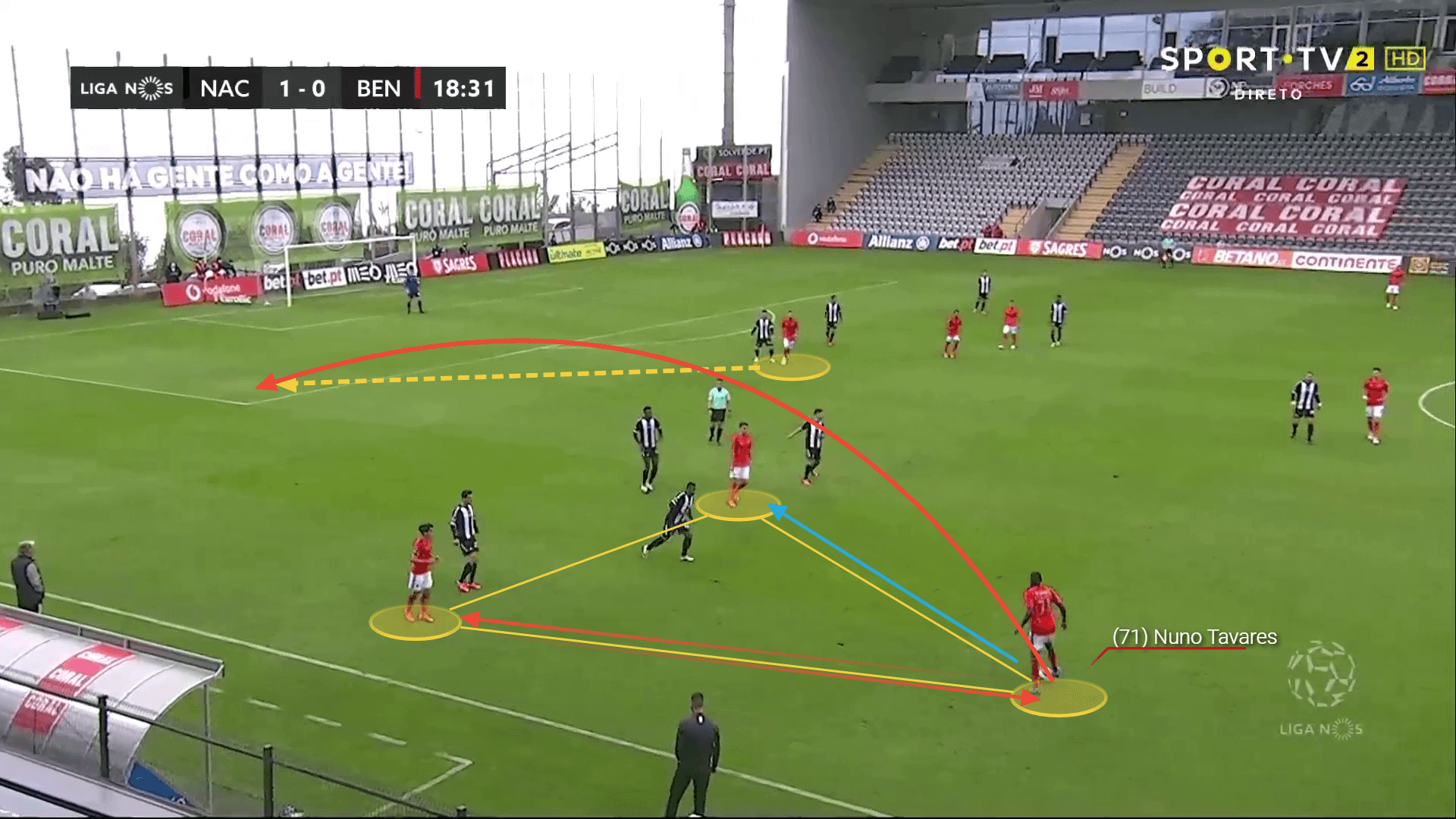
With his 2.98 progressive runs and 7.27 dribbling attempts on average per game, he can easily take on defenders and help Arsenal in delivering the ball to the final third. That’s where his crossing would be useful, as the team have struggled to create chances in the 2020/21 campaign. Having the freedom to focus mainly on his attacking responsibilities might increase his crossing numbers (4.38 per 90) even more, which is much needed for the team as in the absence of distinguished attacking midfielders, crossing is their main way to distribute the ball to the attackers.
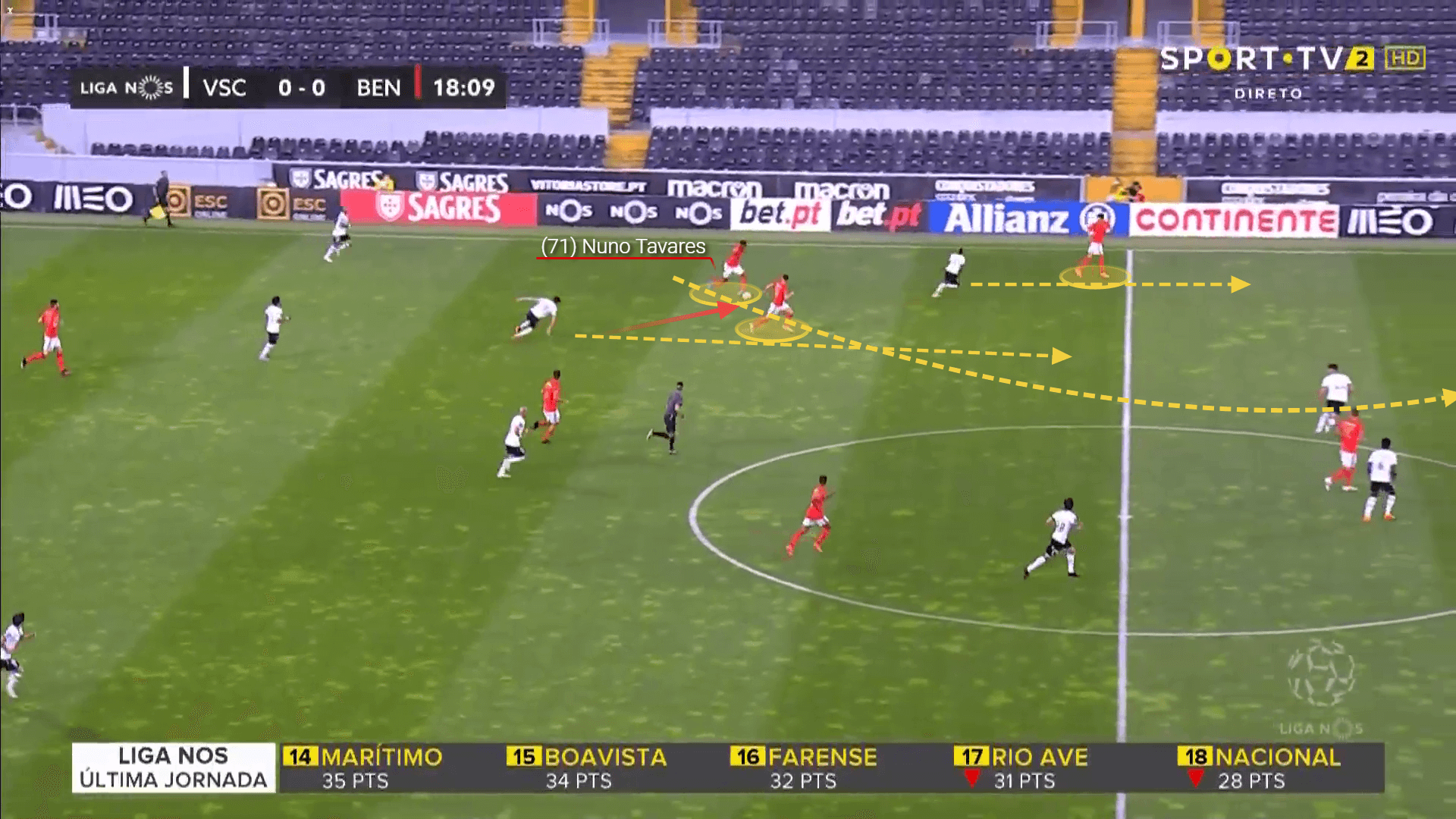
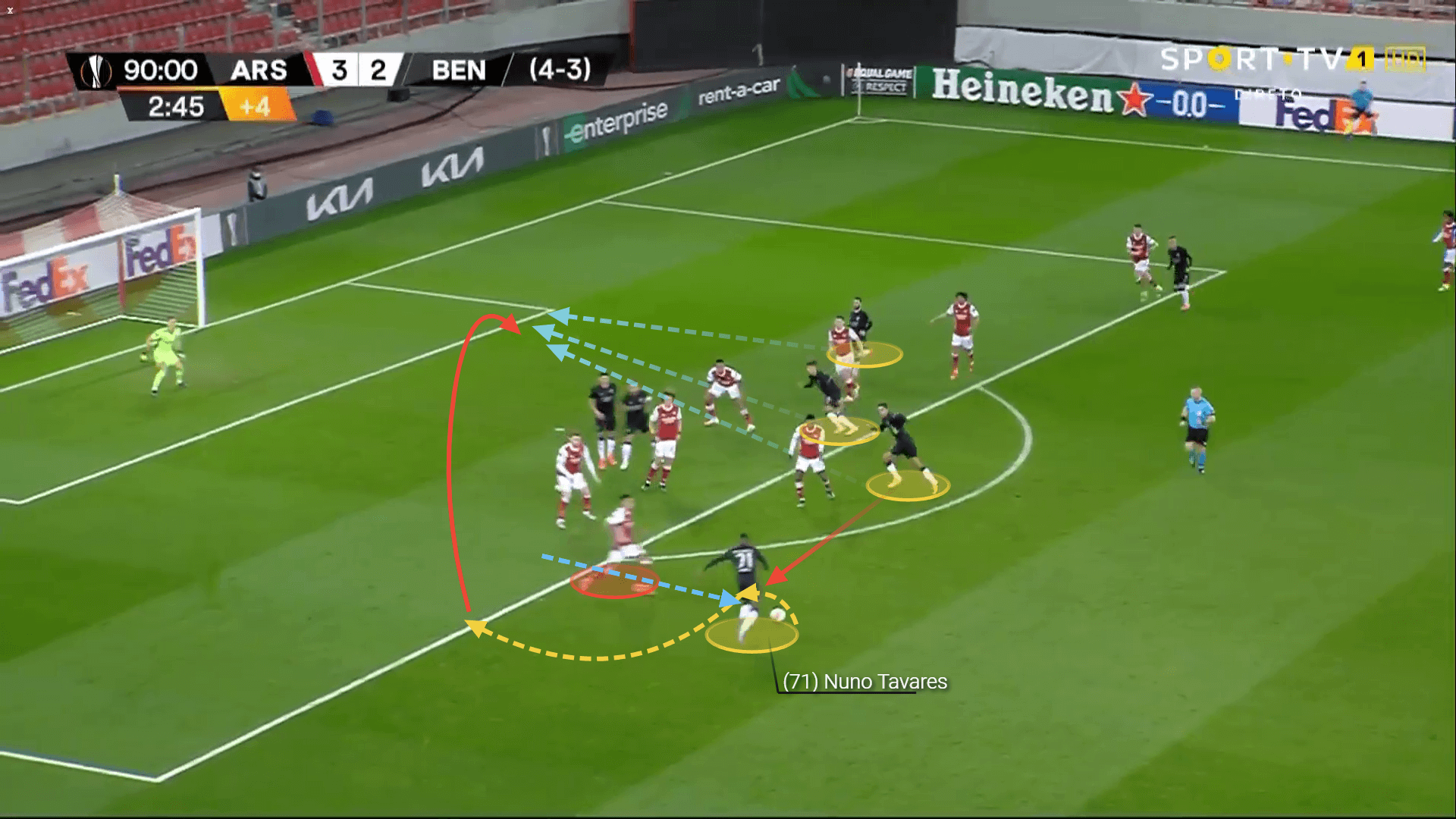
Even though he played only in 14 league games last season, that wouldn’t be something new to Tavares, as Benfica’s attacking actions were focused on the flanks as well. His advanced positioning helped the team in controlling the games in the opposition half, something that Arteta tried to implement at Arsenal but was lacking the squad quality and the defensive stability to succeed.
How could he support the team actions out of possession?
His best defensive asset is his aerial presence. He’s taller than the average for the left-back and left wing-back positions and his abilities in the air are highly valued. Not only he can recover possession fighting for a long ball from the opposition but is also a great addition in the box in defending set-pieces. He could also increase Arsenal’s efficiency in attacking set-pieces as a threat in the box. With a success rate of over 62%, he offers way more than Tierney’s 31.1% in that area. He recovers the ball rather often thanks to his runs on the flank, averaging 7.55 recoveries per 90 last term.
He has some defensive flaws though. His lack of strong positional sense leads to very low efficiency in terms of loose balls. He can rarely fight to recover possession in such situations as his positioning and spatial awareness are not his strongest assets. This also affects his success in challenges as his movement is often unmeasured resulting in committing fouls. He is in Top 10 of the players with the most fouls per 90 in Primeira Liga last season, averaging 2.81 committed fouls.
Conclusion
Nuno Tavares might not be experienced enough to be relied on defensively which means that Arteta’s depth problem in the left-back position might have not been solved. The Portuguese though could become a great option for the Spaniard’s back-three formation where he focuses on controlling the game and having more of the ball in the opposition half.
The 21-year-old needs some playing time and support for becoming a worthy replacement of Tierney in both phases but he definitely has the fundamentals for developing into a successful full-back/wing-back in the near future.






Comments